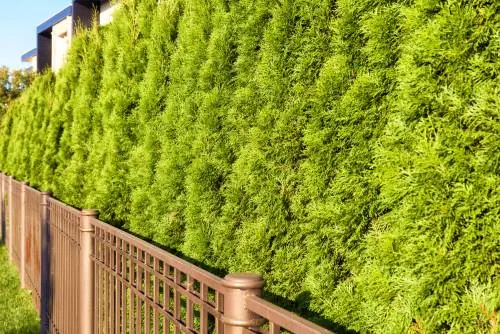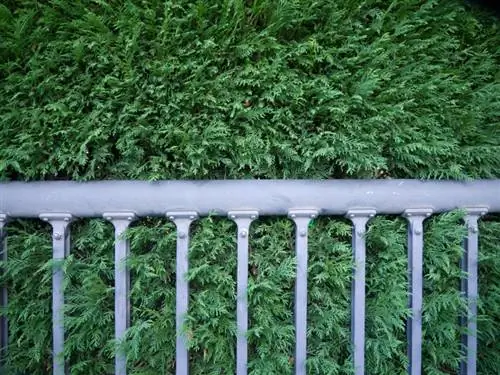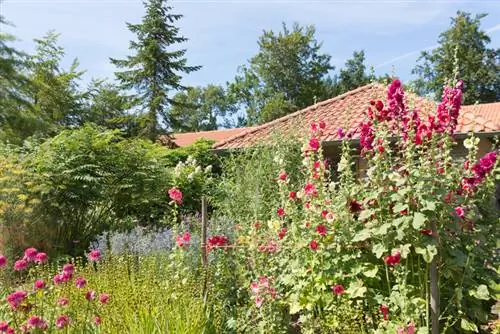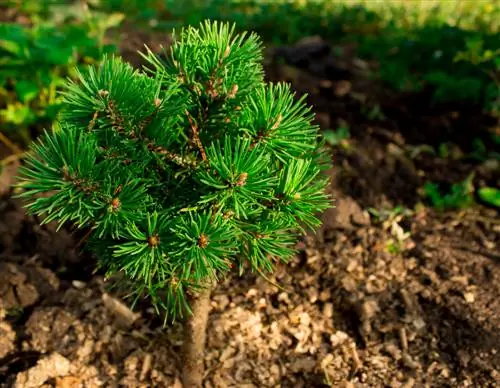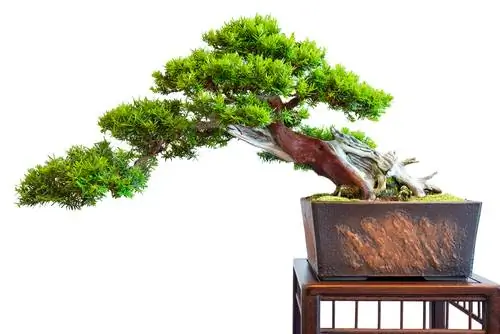- Author admin [email protected].
- Public 2024-01-05 20:48.
- Last modified 2025-01-23 11:21.
Conifer hedges are popular because they provide reliable privacy and a safe nesting place for local songbirds. They protect the terrace from wind, are evergreen, easy to care for and their needles give off a pleasant scent when cut.
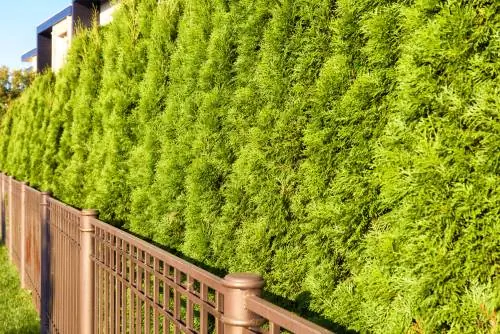
Which conifers are suitable for hedges?
Conifer hedges provide privacy and nesting places for birds. Popular conifer species for hedges include yew, thuja (tree of life), primeval sequoia, spruce and Japanese larch. They are evergreen, easy to care for and smell pleasant when cut.
The characteristics of a conifer hedge
Conifer hedges are relatively fast-growing and quickly form a privacy screen for terraces or other seating areas. A conifer hedge also works well as a property boundary or bed border. All types of conifers are evergreen and are an eye-catcher in the garden even in winter. A conifer hedge requires little work, as pruning is only necessary once or twice a year. A nice side effect when cutting is the pleasant scent of the essential oils that emerge from the cuts. The hedge needs to be watered on warm summer days because conifers do not tolerate dry soil.
Conifer species
Around 588 conifer varieties are known worldwide. The most popular include:
- the yew tree
- the thuja or tree of life
- the primeval sequoia tree
- the spruce
- the Japanese larch
The Yew Tree
Yews occur as strong trees, as columnar yews or as bushes. All are slow growing and evergreen. In autumn they produce red berries that attract birds. All parts of the yew tree are poisonous to humans.
The Thuja
It is hardy, windproof and grows quickly into an opaque hedge. Typical are the scale leaves that lie close to the branches and often turn olive green in winter. When crushed or cut, they release a pleasant scent. It loves a sunny location and moist soil.
The primeval sequoia tree
This is a conifer that turns golden yellow in autumn and then loses its leaves. It is ideal for very moist soil types. A single cut ensures an attractive appearance.
The Spruce
Spruce trees are not often seen as hedges. However, they are excellently suited due to their cutting tolerance. Without pruning, spruce trees can grow up to 30 m high. Spruce trees like to be in the sun or partial shade, offer good privacy and can also tolerate harsher winters.
The Japanese larch
It is a deciduous species and can reach a height of up to 30 m if left unpruned. Regular pruning is required. With its blue-green needles it is an extraordinary eye-catcher. In autumn the larch hedge takes on a beautiful golden yellow color.

